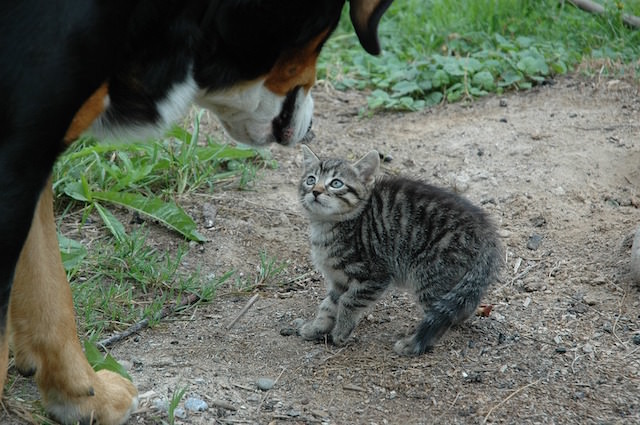Your cat is your friend and your housemate, but he is not so far removed genetically from his early feline ancestors. Cats do some odd things, and if you really think about their roots as felines, you can see that these behaviors are just a part of what makes them unique and fun. Here are 5 odd cat behaviors, explained.
1. Why do cats rub their faces on things?
There may be many reasons why cats do this. First, in an interaction with familiar cats, it seems to be a friendly greeting. Also consider that your cat’s whiskers “taste” his environment. He can gain information about all the things around him by touching things with his whiskers. He also can deposit a facial pheromone when he rubs on something, which labels it as already checked out and safe.
2. Why do cats beg for food even when they have some?
Every cat sometimes meows at us as if asking for food when a glance shows that there is still some in her dish. People think that they do this because they want different or new food, and that might be, but also it may be because when you are feeding her, you are focused on her. We all talk to our cats and interact with them as we get the food together. As humans we understand the social aspects of dining, so why can’t our cats?
3. Why do cats bring dead animals to us?
Cats originally became a part of a human world because of their skilled hunting abilities. Rodent pests were a problem for early farmers, impacting their grain storage. A partnership with cats was a wonderful answer. When cats became a part of our family dynamic, they started to see themselves as contributing members. To a cat, the prey is something that the family needs to survive. Maybe she is just doing her part to help the family survive and flourish.
4. Why do cats arch their backs when they are afraid?
This funny looking stance is a familiar sight among cats. They raise their backs and fluff up their hair. The hair fluff is called piloerection and occurs in response to adrenaline, which is released because of fear or startle. When a cat becomes frightened, there is a surge of adrenaline that makes him arch his back and experience piloerection at the same time as a reflexive response. It is believed these reactions have evolved over time to make the cat look formidable to his enemy.
5. Why do cats chatter at birds?
When your cat looks out the window and sees something, she might start to chatter or chirp. It’s a cool cat thing, but you might not know why she does it. Domestic cats have small glands on the roof of their mouths that lie just behind their noses. The glands are called Vomeronasal organs (VMO). By chattering she is able to pull air across these glands. This gives her more information about a potential prey item. It is like when you see something interesting, but then want to touch it to know more. Your cat is using another method to find out about what she sees.
Cats certainly are different from other animals and us, but the reasons that they do what they do are often simple if you take the time to find out. It is interesting to watch cats and be entertained by their antics. Maybe this is why internet cat videos are such a sensation!
Want to be in on a conFURsation? Find me on Facebook by clicking here.


